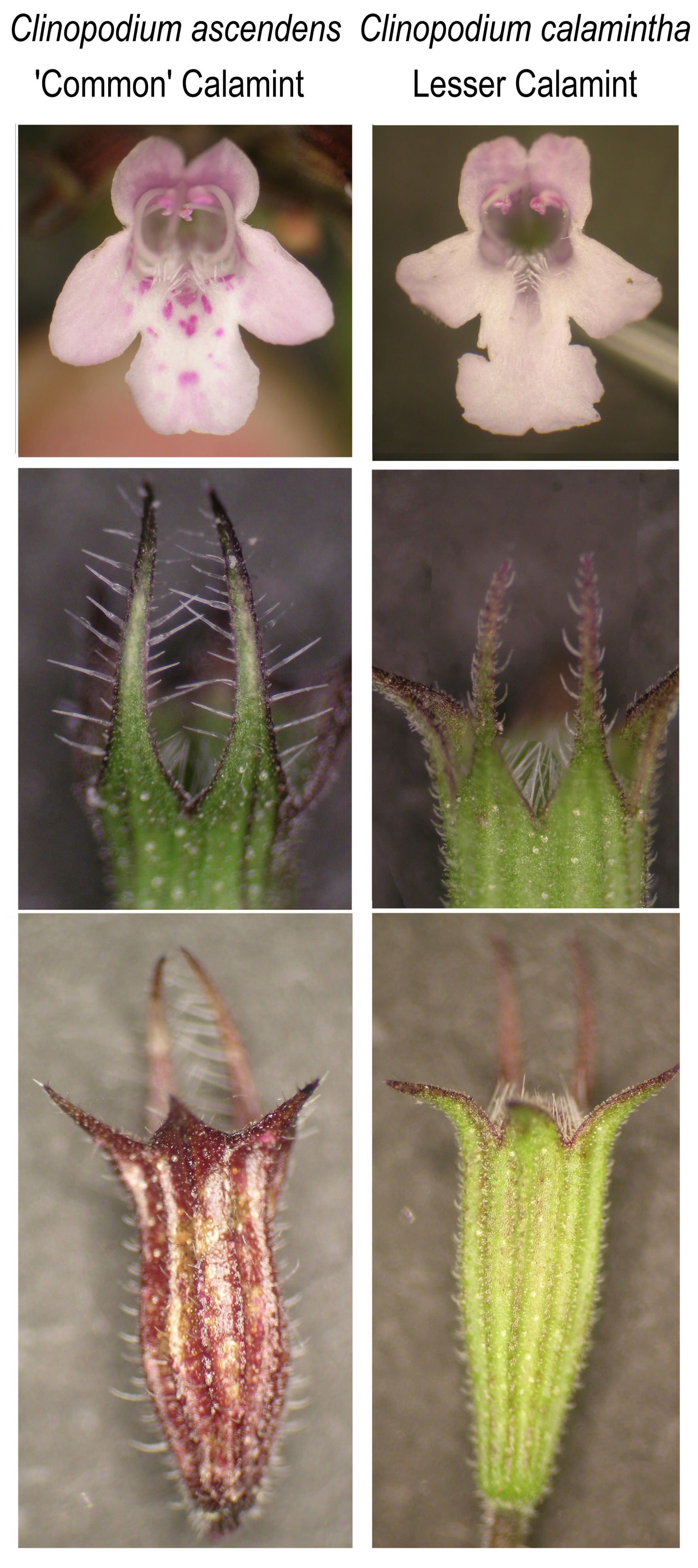ESSEX BOTANY AND MYCOLOGY GROUPS
|
|
|
|
|
|
|
|
|
|
|
ESSEX BOTANY AND MYCOLOGY GROUPS |
|||||||||
|
Calamints I.D.
Many of the characters cited for separating the two species are very subtle. In reality, even with the two growing side by side the differences are sometimes not obvious. One problem is that unless they are grown on identical soils it is possible to observe differences in colour and robustness that are environmentally induced. The plants shown below have been grown together on the same soil for several years. In general the Lesser is a sprawling grey-green prostrate plant whereas the Common is noticeably greener and erect.
Note the following constant differences: The 'Common' invariably has a pattern of red/pink spots on the corolla whereas the corolla of the 'Lesser' is plain. The long wide-based straight hairs on the two lower calyx teeth of the 'Common' contrast with the short curved hairs of the 'Lesser'.
The hairs project in the horizontal plane - they are therefore most clearly observed or photographed from below.
Mature plants of the two have very similar leaves. However young non-flowering plants are distinct in that the 'Common' has apple-green upside-down saucer shaped leaves that are several times the size of the rather flat grey-green leaves of the lesser.
Lesser Calamint is largely confined in England to the Kesgrave old Thames gravels of southern Suffolk and Northern Essex, an area where the 'Common' is largely absent.
At their interface on the East Anglian chalk they hybridise and backcross freely and are indistinguishable (Sell & Murrell. Vol.3. 2009). and can only be recorded as the aggregate.
Where populations of the two occur together occasional plants otherwise conforming to the 'Lesser' have a few lone, straight, wide-based hairs on their lower calyx teeth.
a